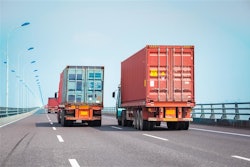
As pandemic restrictions fall away and industries adapt to living with COVID-19 as an endemic, one of the most critical industries remains in turmoil: the U.S. food supply. Shortages of popular grocery items, product recalls, weather-related supply problems and labor issues continue to wreak havoc on retailers and consumers alike. Between out-of-stocks averaging 13%, transportation costs up more than 25% and inflation flirting with double digits, food prices are still 13% higher than a year ago. All of this adds up to higher costs for consumers, food insecurity and billions of dollars in losses for retailers.
While everyone agrees the U.S. food supply chain is struggling, realistic solutions, like many products themselves, seem to be in short supply.
Recognizing that truck transportation is a vital component in the supply chain, the Biden administration has proposed a plan aimed at putting more truckers on the road by lowering age requirements. But this ignores perhaps the biggest cause of freight inefficiency: poor driver utilization. Putting more drivers on the road will only push costs higher if they’re left sitting idle, waiting for dock appointments to pick up or deliver their cargo.
As the only regulated component in the supply chain, driver utilization must become the primary focus of efforts to resolve the bottlenecks and inefficiencies. To do that, we must tear down siloes between shippers and receivers and begin leveraging shared data to coordinate freight transportation on a national scale.
The dock time debacle
Because every U.S. food shipper and receiver prioritizes the pickup and delivery component, few give consideration to any other pieces of the puzzle. This disconnect creates major bottlenecks and significantly drives up food transportation costs, especially with perishable and refrigerated items.
As shippers clamor for more capacity, receivers often keep drivers waiting at the dock, turning inbound logistics into a profit center through fines and chargebacks for late arrivals and other load issues. Both shippers and receivers set unrealistic dock hours that make it difficult for drivers to complete their route efficiently—or at all—during their legally allowed driving hours. Drivers often sit for hours while receivers unload and break down every pallet looking for any potential anomaly. This inefficiency cuts deeply into drivers’ time on the road—which is already limited by ELD mandates—and their paychecks, as well as overall freight efficiency, and ultimately, consumers’ pockets.
One situation involves a driver late in picking up a perishable load due to traffic conditions and he had to pay a fine, making him late to the first receiver where he was charged another fine. It took six hours to unload and inspect his cargo, resulting in the shipper being even more behind schedule and missing his next delivery appointment.
Multiply this scenario over thousands of trucks each day, and it’s easy to see how store shelves remain bare, truck drivers are discouraged, and consumers are frustrated. In many cases, by the time the product reaches its destination, it’s past its allowable time in the truck and the whole load must be scrapped, resulting in a tremendous waste of food, time and money.
Data is the answer to dock time coordination
The solution to the food supply chain dysfunction is real-time tracking and a consolidated, coordinated network of food freight management. Currently, 73% of supply chain professionals say they cannot provide real-time tracking to customers, and 83% of organizations want greater supply chain visibility. That means there’s a tremendous opportunity to leverage accurate, reliable data by connecting the dots.
Bringing shippers, carriers and receivers together onto a single, comprehensive platform can eliminate these siloed operations and get our entire food supply chain working together for mutual benefit.
By integrating the Top 100 food shippers and Top 100 receivers within a single real-time freight network, companies can deploy artificial intelligence and dynamic scheduling to optimize appointment times. With real-time tracking, a smart network can detect when a load will arrive late and adapt schedules to accommodate issues as they arise. This comprehensive approach would look at drivers’ available hours, optimize their drive time and reduce idle time and deadhead miles to maximize driver utilization, dramatically lowering transportation costs and improving efficiency across the supply chain. Not to mention, it would reduce food waste and make for a more secure food supply with real-time agility to respond quickly when major disruptions occur.
Improving supply chain efficiency and securing the U.S. food supply should be a top national priority as global events and inflation continue to create an unpredictable situation. What was once considered a crisis is now the new normal, with an unexpected obstacle arising nearly every week.
Transforming the trucking industry through digitization, shared data and a consolidated freight network would give the tools and agility to adapt to whatever comes next—whether it’s a literal roadblock or a massive global disruption.



















